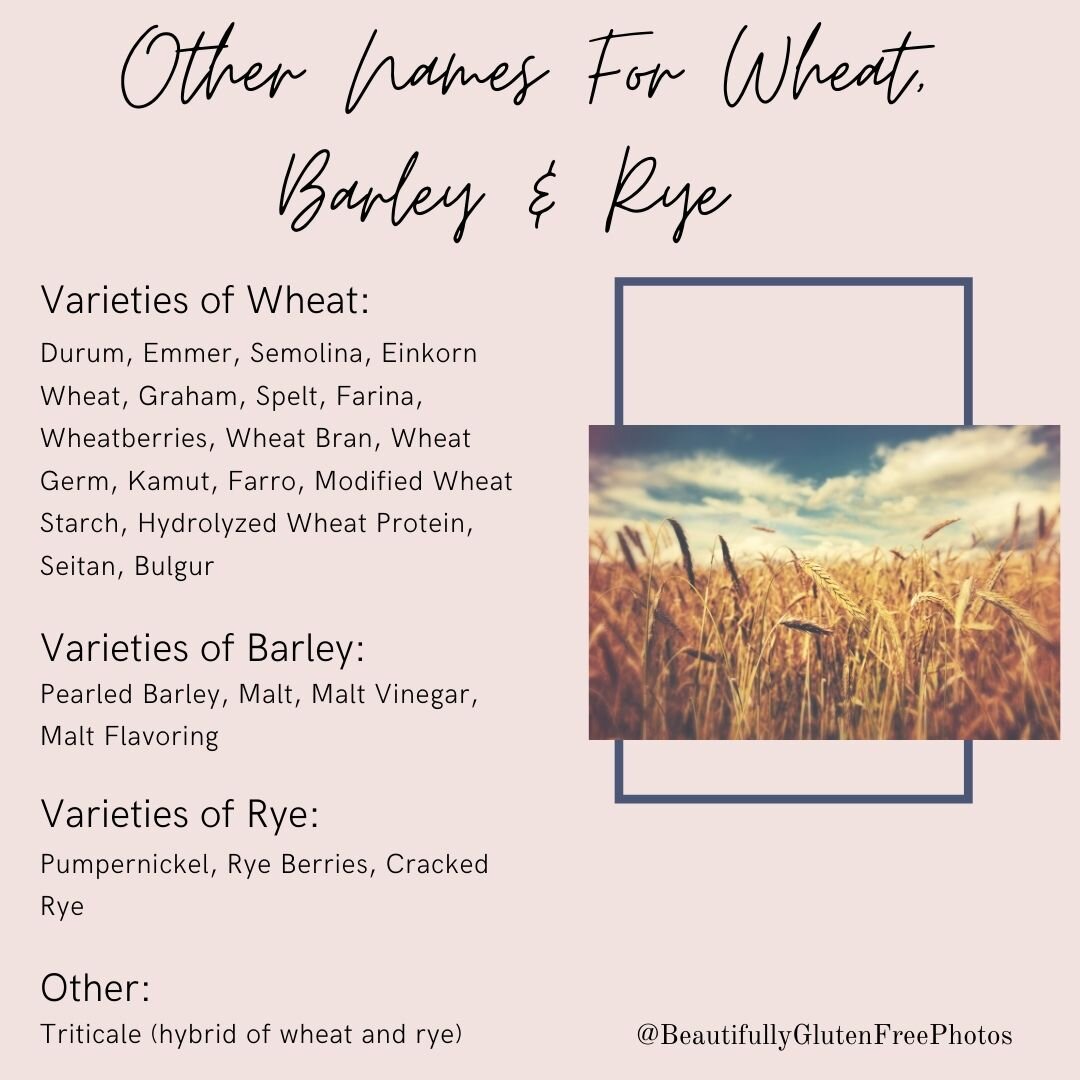Gluten, what it is and Where It Can Be Found
Technically, “gluten” is the general name for the series of proteins found in grains. These proteins are the energy source for future seed growth. Different grains have different gluten proteins that react differently in the body, when consumed, and behave differently, when used, in food and non-food products.
For example, the gluten protein found in wheat is well suited for and widely used for baked goods and pastas because of its ability to create structure, increase elasticity, trap gas, retain moisture and improve texture. These characteristics are also why wheat gluten is widely used as stabilizers and fillers in processed food and non-food products.
Even though “gluten” is a general term, it is universally used in reference to the specific proteins found in wheat, barley, rye and triticale (a cross between wheat and rye); which cause negative reactions in many people.
For someone with celiac disease the gluten proteins in wheat, barley, rye and triticale are what that trigger the immune response that causes the body to attack the lining of the small intestine.
Celiac disease is a very serious autoimmune disease that can only be treated by following a strict, lifelong, gluten (wheat, barley, rye & triticale) free diet. Since it only takes a trace amount of gluten to trigger a reaction, individuals and families need to be very careful when preparing food in kitchens that share space with gluten containing ingredients and food; both in homes and restaurants. Click for more information about creating a safe gluten free kitchen and suggestions for ordering gluten free at restaurants.
There are more than 200 + symptoms of celiac disease. Symptom presentations vary widely, can be immediate, gradual, severe or silent/asymptomatic. Continued exposure to gluten, in a person with celiac disease (even silent/asymptomatic celiac), leads to intestinal damage that can cause and lead to other health complications, such as failure to thrive in children, chronic inflammation, gastrointestinal issues, malnourishment, infertility in both men and women, neurological issues, mental conditions, increased chance for certain cancers and a number of other autoimmune diseases.
Gluten has a lot of different names. It is important to read labels carefully to make sure that gluten, in one form or another, is not in the food or products that are consumed. According to the FDA, foods that are labeled “gluten free” are either naturally gluten free or do not contain more than 20 parts per million (ppm) of gluten. The general “gluten free” label is voluntary while “certified gluten free” labels are issued from 3rd party organizations that require rigorous and ongoing record keeping, testing and audits.
Oats are tricky and need special consideration. Someone with celiac disease must only consume oats that have been tested, by an independent 3rd party testing organization, to be gluten free and labeled as such. Due to the way oats are grown, milled, and processed, often in the same fields and facilities as wheat, barley and rye, cross contact with gluten is very common, making them not gluten free. There is also a small percentage of people with celiac disease who cannot consume certified gluten free oats because they react to them as if they have consumed gluten.
Common Sources of Gluten
Dishes: Pizza, Gnocchi, Dumplings, Humbow, Wonton Wrappers, Fish and Chips, Onion Rings, Meatloaf, Meatballs, Matzo, Tempura
Pasta/Noodles: Assorted Shaped Wheat Noodles, Ramen, Udon, Soba if not 100% Buckwheat Flour, Egg Noodles, Ravioli, Couscous, Lasagna, Orzo
Breads: Naan, Cornbread, Pita, Sandwich Bread, Hamburger/Hot dog Buns, Croutons, Stuffing, Bread Crumbs, Panko Breadcrumbs, Flour Tortillas, Bagles, Dinner Rolls, Breadsticks, English Muffins
Baked Goods: Pies, Cakes, Muffins, Croissants, Cookies, Brownies, Quiche, Biscuits, Doughnuts, Pastries
Breakfast Items: Pancakes, Waffles, French Toast, Crepes, Cereal, Granola, Oatmeal
Snacks: Pretzels, Crackers, Graham Crackers, Fig Bars, Granola Bars
Beverages: Beer, Ale, Lager, Malted Beverages
Possible Hidden Sources of Gluten
Soups, gravies & sauces: oyster sauce, teriyaki sauce, soy sauce.
Salad dressings & marinades.
Condiments that are shared with gluten containing foods and need a knife or other serving utensil to use.
Spice blends, brewer’s yeast.
Some cheese products.
Some restaurants might pancake batter to scrambled eggs or omelets.
French Fries – from shared friers and/or coated with seasonings.
Potato chips, tortilla chips.
Energy bars, including versions with non-certified oats, granola.
Processed lunch meats, meat alternatives, imitation seafood, pre-seasoned meats.
Buffets & salad bars
Communion wafers, panko breadcrumbs
Malt in all forms, but not maltodextrin. Maltodextrin is different, it’s a highly processed ingredient that is used as a low sugar alternative, thickener, and texture enhancer. It ss derived from starches, including wheat, but the gluten protein has been removed and is considered safe for people who have celiac.
Beer Alternatives (some wine coolers, root beers), dessert wines, teas with added flavors, energy drinks.
Ice Cream, “Natural Flavoring,” some caramel coloring, licorice, candy.
Makeup, personal care products, medications, vitamins, supplements, protein powders.
Play-dough
The Good News!
You can find gluten free versions of everything listed above, it just takes some research.
Anne Barbo Moon
Disclaimer:
While I have 15+ years’ experience of navigating the world as the parents of a child with celiac, have worked with multiple celiac disease related organizations, and has a Master’s of Science in Holistic Nutrition I am not a physician, or other licensed medical professional. The material and content contained on this website is for informational purposes only and are not intended to serve as a substitute for consultation, diagnosis, or medical treatment by a licensed medical professional. Please consult your doctor for any medical or health-related questions. The information contained on this website should NOT replace medical or health-related advice from a physician or licensed medical professional.





